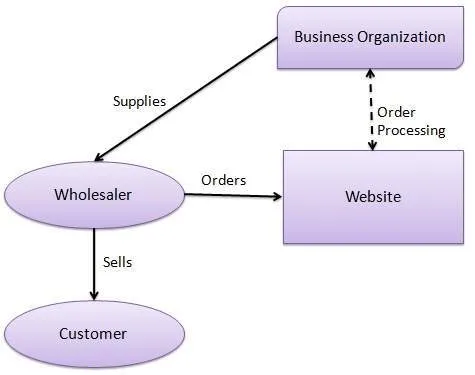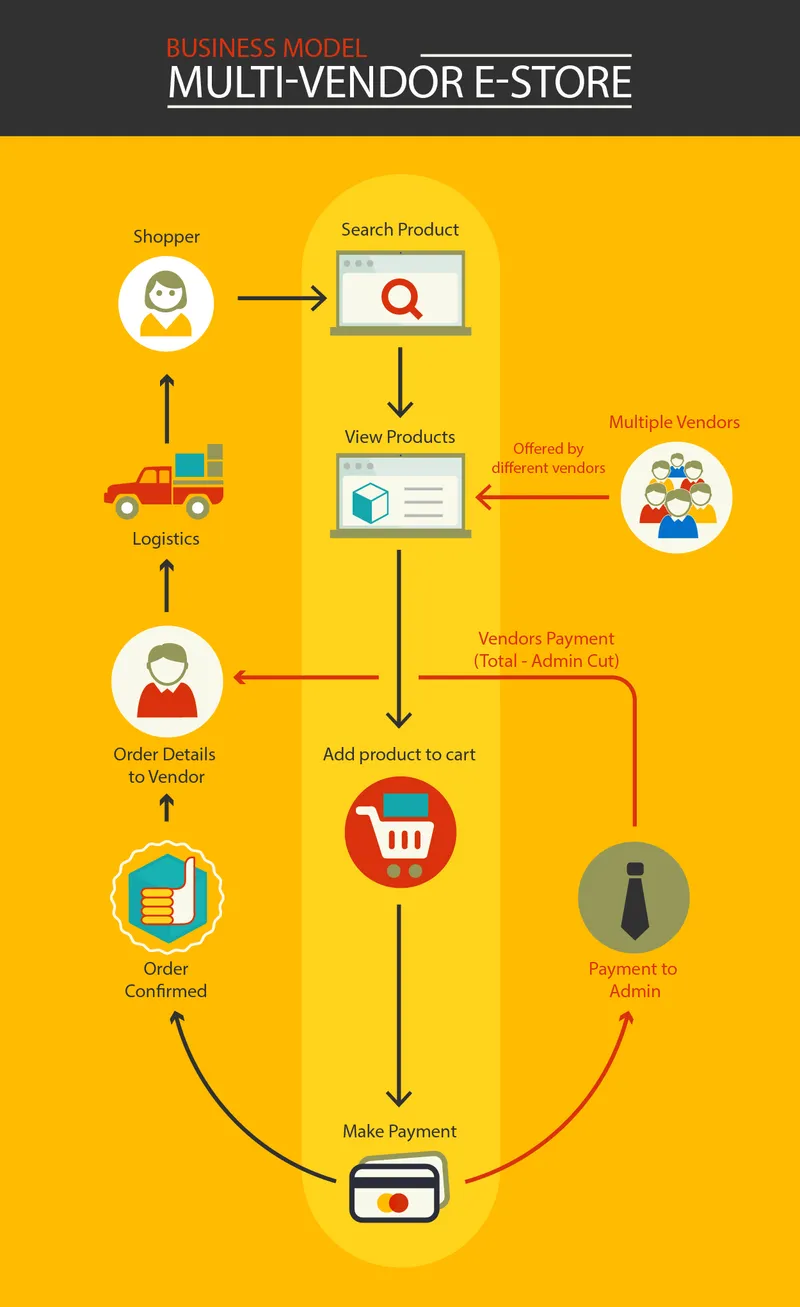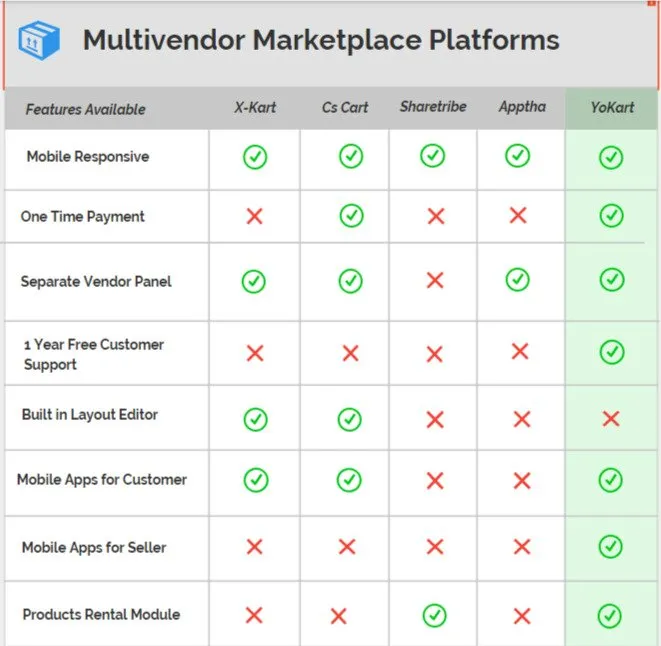

How to Start a Multi vendor Ecommerce Marketplace in 2020?
Due to the high internet penetration all over the world, the eCommerce industry has emerged phenomenally across the globe. In the USA, retail ecommerce sales are expected to be $548 Million in 2019. An interesting fact here is that popular multi-vendor ecommerce companies Amazon & Ebay have nearly captured the 60% of the US ecommerce market.
What is meant by Multi-vendor or Multi seller marketplaces?
A multi-vendor marketplace is that where different sellers can sell their products by creating a unique storefront. The marketplace owner manages logistics related things and inventory is being managed by vendors. The owner of the marketplace earn commission on the sale of every product & by the other revenue generation methods that are given below.
Types of Multi Vendor Business:
There are 3 types of multi-vendor businesses:
B2B Multi vendor business:
For bringing transparency and remaining competitive, many B2B commerce companies are investing in online marketplaces. Alibaba & Walmart are the popular names in the B2B ecommerce industry.
Business Model of B2B Multi vendor Ecommerce Marketplace:

Source: https://www.unilogcorp.com/b2b-business-model/
B2C Multi vendor Business:
Similarly, these days many aspiring entrepreneurs prefer to invest in B2C multi selling websites. The best examples are: Amazon, Airbnb, FlipKart, etc.
Business Model of B2C Multi vendor Ecommerce Marketplace:

C2C Multi vendor business:
On C2C marketplaces customer directly deal with the businesses. On a C2C marketplace, customer can act as a seller and seller can act as a customer. OLX is a well known C2C marketplace.
Revenue generation channels on a multi-vendor marketplace:
Here are top revenue generation methods of a multi-vendor ecommerce website or marketplace:
- Commission on every sale
- Monthly and yearly subscription fee from sellers
- Promoted and featured products on the home page
- Affiliate partnerships
- Side banner ads
- Google Adsense ads
Must have features of a multi-vendor Website & Mobile App:
Here is the list of features that yours’ B2B or B2C multi-vendor ecommerce website or mobile app must have:
Multi-vendor Website & Mobile App Features from Buyers’ Perspective
- High website speed
- Mobile optimized
- Easy order processing
- Seller’s reviews and ratings
- Coupon codes and rewards points
- Advance search features on website and app
- 3 dimensional images and well written product descriptions
- Customers’ testimonials
- Digital wallet and multiple payment gateways
- Multi-lingual and multi-currency
- Bulk order feature for B2B marketplaces
- Multiple levels of administrative access
Multivendor Website & Mobile App Features from Sellers’ Perspective:
- Separate vendor panel
- Product import/export
- Rating and review system
- Shipment of products by vendors
- Customer-to-vendor communication
- Push notification for vendors
- Automated payment with draw
- Informational pages for vendors
- Products listing and management through mobile app
Multivendor Website & Mobile App Features from Admins’ Perspective
- Upload unlimited number of products
- Multiple revenue generation methods
- Customizations and scalability
- Automated task processing
- Reporting and data analytics
- Integration with third party tools
- Registration pages for customers and sellers
- Detailed product listing pages
- Product review management
- Search engine friendly
- Content management system for easy website management
- Fully native IOS and Android apps
How to Launch a Multi vendor Website or Marketplace:
As I’ve written in the 1st paragraph, the multi-vendor ecommerce marketplaces such as Amazon, Alibaba, FlipKart, etc. have already grabbed the 60% of market and it becomes tough for an eCommerce startup to make their presence. To excel in such a competitive industry, you need to develop an ecommerce multi-vendor website/app by targeting the hyper-local market. Initially, you can start an online multi-vendor marketplace like Amazon, Etsy, Alibaba, etc. in our local city or state by understanding the audience needs and once your startups click well, you can expand it in different regions.
Building a multi-vendor marketplace from scratch can cost you thousands of dollars. You can easily start your multi vendor ecommerce website & app with ready to launch platforms like Yo!Kart. It is the most used & advanced multi-vendor ecommerce platform in the industry.
Here is a comparison chart of the best readymade multi vendor ecommerce platforms:






